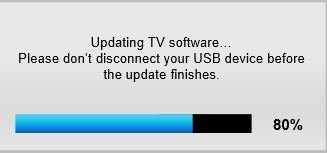Proshivka Televizora Samsung Ue40d5000

Contents • • • • • • • • • • • • • • • • • • • • • • • • • • Blind Factory Reset Before trying to EEPROM reset, please try a factory reset, that might revive your TV also. Press 'EXIT' button for 12 seconds (15 is better since you cannot see TV), than press 'Left' and 'Enter' This wiki entry will not help resolve a TV bricked by firmware flashing. One example (from the original post of this wiki): This is Erdem. As I bricked my D series device by miss service menu setting, I search for solutions to recover it.
After with help of Juzis we unbricked device with the same way of C series TVs. Here I wanted to try to let you know how the process is working. Firstly, this hack doesn't work if you bricked you device by firmware flashing. This hacks just removes service menu settings and let you give another chance to fix settings. Also you needed to find correct values for your TV after resetting NVRAM like Model / Type / Tuner / Font Color and others.
It's better to have screen shots of your service menu. You can also ask help from our forums. EEPROM EEPROM is a short of electrically erasable programmable read only memory, which is actually a chip. There are several EEPROM chips used in Samsung TVs. All service menu settings are kept in the so called SoC EEPROM. You can delete and reprogram this chips millions time. So they are fast and reliable.
Reseting NVRAM (EEPROM) For resetting TV, settings, you needed to remove SoC EEPROM device from TV. But it's not required. In electronic world, if you disable communication of the chip, it counts as removed. So we just needed to kill communication of SoC EEPROM.
EEPROMs on Samsung TV's communicating via common i2c protocol. That protocol carries data via SDA line and send clocks via SCL line. In our situation, both blocking SCL or SDA will works. But I decide SDA. To do this, all you have to do that feeding (connecting) GND (ground) or VCC (3.3v) to SDA line with little wire. Since this lines are HIGH (v3.3) in IDLE, its better to hold it via VCC. You can also hold this lines via GND too.
IMPORTANT: THE PROCESS OF UPDATING YOUR SAMSUNG SMART TV MAY RESET THE DEVICE TO ITS DEFAULT SETTINGS Your TV channels.
But don't try to connect both GND and VCC. It will be short circuit and probably will damage your board. Join VCC and SDA, power on TV and hold about for 20 seconds with the TV powered. It just try to read (wrong) settings from EEPROM, since it cannot read anything (refer to the warning message bellow), just start with defaults. That is what we want. Than releasing SDA line and shutting TV off will update the settings on EEPROM with null values, that TV could boot with it. After all, you can enter service menu and change the required changes.
Lainiest if you have guaranteed power to the set it is likely you are having an issue with the power board. You will have to unplug it and remove the back of the set.
Then check the power board for any blown fuses or other components. You do want to post pictures of your boards with your question so we can try and assist you further with that.
For that use The attached image should show the fuse on your power board. Check for continuity and see if you get power to that, once it is checked. Unplug your set to check it for continuity. Then plug it in and use your meter to check for power. Easeus data recovery serial key mac. This statement about continuity is not accurate. Verifying continuity means that you are checking to make sure there is a complete electrical path/connection between 2 points with minimal resistance.
And on these size fuses, you will most likely see resistance around 0.1-0.2 ohms. That is important because you can compare the fuses against each other. If 2 of them give you a resistance around 0.2 ohms and the other shows 40 ohms per say, I would go ahead and call that a bad fuse even though you were able to get some kind of reading through it. You will also need to remove one side of the fuse from the circuit in order to accurately measure the resistance. Other wise you can get a false indication of a “good” fuse.